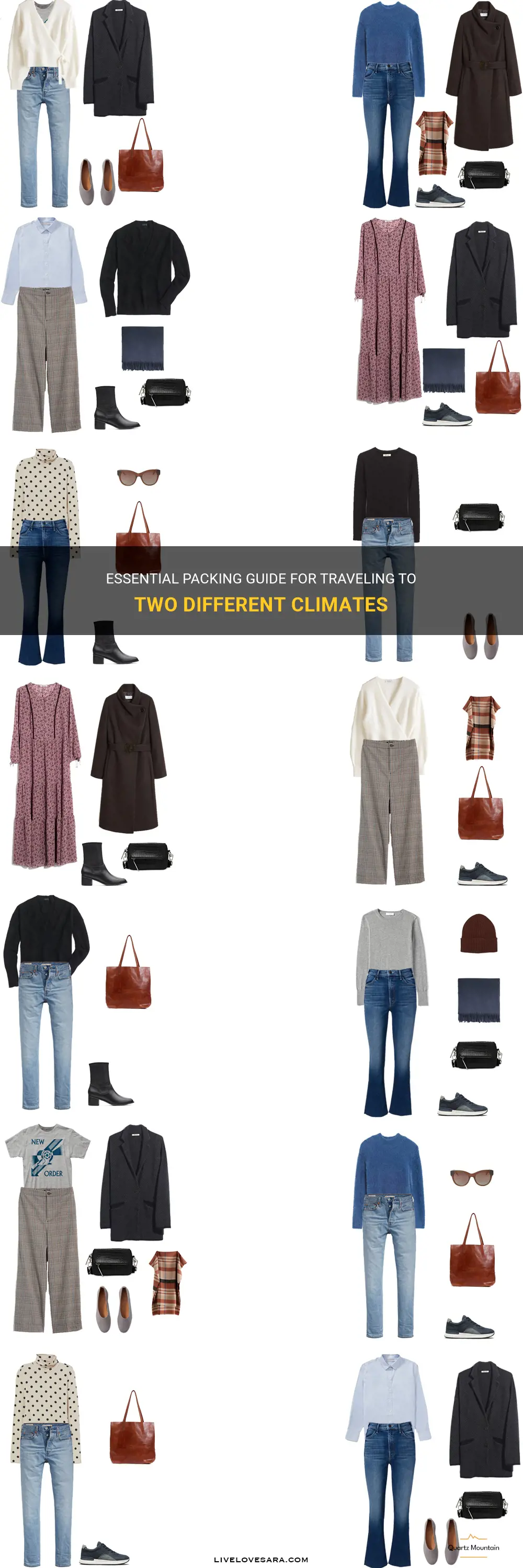
When planning a trip to two different climates, packing can become quite the challenge. From warm beaches to cold city streets, you want to be prepared for any weather condition that comes your way. That's why we have created the essential packing guide for traveling to two different climates. Whether you are heading on a tropical paradise getaway and then off to a snowy mountainside retreat, we've got you covered with the must-have items for your suitcase. So, buckle up and get ready to pack smartly for your ultimate adventure!
| Characteristics | Tropical Climate | Arctic Climate |
|---|---|---|
| Clothing | Lightweight and breathable fabrics (e.g. cotton, linen) | Warm and insulating fabrics (e.g. wool, fleece) |
| Footwear | Sandals or flip flops | Insulated and waterproof boots |
| Accessories | Sun hat and sunglasses | Thermal gloves and beanie |
| Weather Protection | Sunscreen and insect repellent | Waterproof and windproof outerwear |
| Electronics | Camera or smartphone for capturing beautiful landscapes | Camera or smartphone for capturing winter scenery |
| Medications | Mosquito repellent or anti-malaria medication | Cold and flu medication |
| Activities | Swimming and snorkeling gear | Skiing and snowboarding equipment |
| First Aid Kit | Basic first aid supplies (e.g. band-aids, antiseptic cream) | Cold and cough remedies |
| Toiletries | Moisturizer and bug spray | Lip balm and hand cream |
| Documents | Passport and travel insurance documents | Passport and travel insurance documents |
What You'll Learn
- What are the essential clothing items to pack when traveling to a hot, tropical climate?
- What are some recommended items to pack when traveling to a cold, snowy climate?
- How do I prepare for traveling to both hot and cold climates on the same trip?
- Are there any specific accessories or footwear recommended for each climate?
- Are there any important cultural considerations or dress codes to keep in mind when traveling to these different climates?

What are the essential clothing items to pack when traveling to a hot, tropical climate?
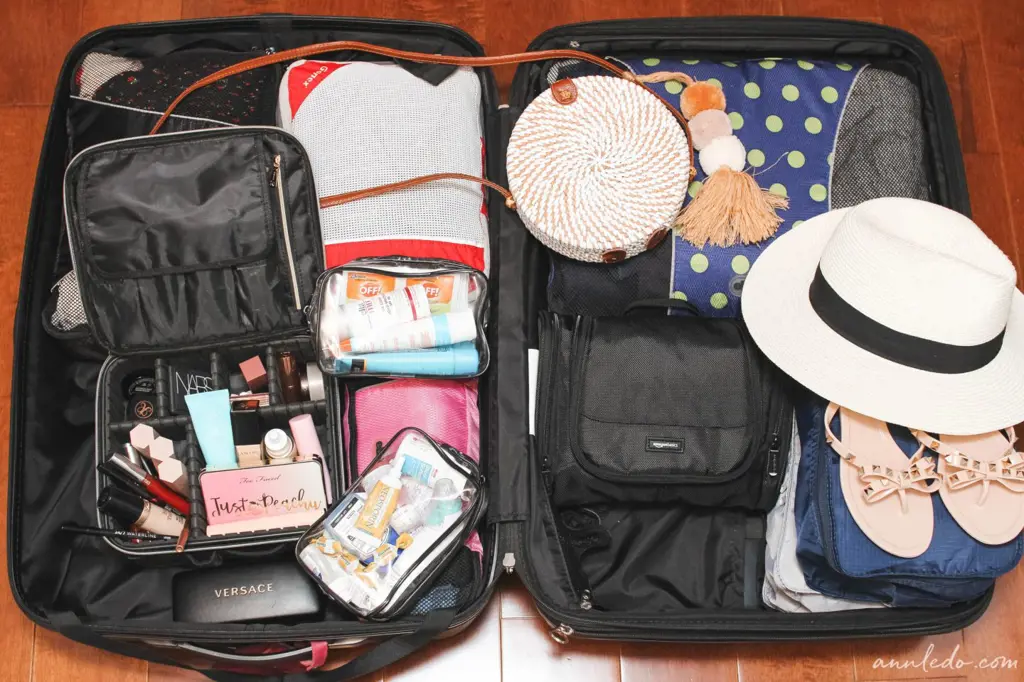
When traveling to a hot, tropical climate, it's important to pack the right clothing to stay comfortable and protected from the sun. Here are some essential clothing items to consider bringing on your trip:
- Lightweight, breathable tops: Look for tops made from lightweight and breathable fabrics such as cotton, linen, or moisture-wicking materials. These will help keep you cool by allowing air to circulate and wick away sweat.
- Shorts and skirts: Opt for lightweight bottoms such as shorts and skirts that offer freedom of movement and allow your legs to breathe. Consider packing a mix of styles to suit different occasions and activities.
- Swimwear: If you plan on spending time by the beach or pool, don't forget to pack your swimsuit. Look for swimwear made from quick-drying and UV-protective materials to keep you comfortable and shielded from the sun's rays.
- Sun hat: A wide-brimmed hat can provide valuable shade for your face and neck, helping to protect your skin from the sun. Look for a hat with UPF (Ultraviolet Protection Factor) to enhance its sun protection capabilities.
- Sunglasses: Invest in a high-quality pair of sunglasses that offer 100% UV protection. This will not only protect your eyes from harmful UV rays but also reduce glare and enhance your vision in bright conditions.
- Light-colored, long-sleeved shirts: Contrary to popular belief, long-sleeved shirts can actually help keep you cool by shielding your skin from the sun. Opt for light-colored shirts that reflect the sun's rays rather than absorb them.
- Breathable footwear: Choose footwear made from breathable materials such as mesh or canvas to allow your feet to ventilate. Walking sandals and lightweight sneakers are popular choices for tropical climates.
- Light layers: Even in hot climates, temperatures can drop at night or in air-conditioned environments. Pack a few light layers such as a cardigan or a lightweight jacket to keep you warm when needed.
- Moisture-wicking underwear and socks: Opt for moisture-wicking underwear and socks made from synthetic materials that will help keep you dry and comfortable throughout the day.
- Bug repellent clothing: Consider packing clothing treated with insect-repellent properties or bring along bug repellent spray. This will help protect you from mosquitoes and other insects that are prevalent in tropical climates.
Remember to also pack any necessary accessories such as sunscreen, a reusable water bottle, and a lightweight backpack to carry your essentials while exploring the area. By being well-prepared and packing the right clothing items, you can enjoy your trip to a hot, tropical climate while staying comfortable and protected.
Essential Gear for a Memorable Trip to Big Bear: What to Pack
You may want to see also

What are some recommended items to pack when traveling to a cold, snowy climate?
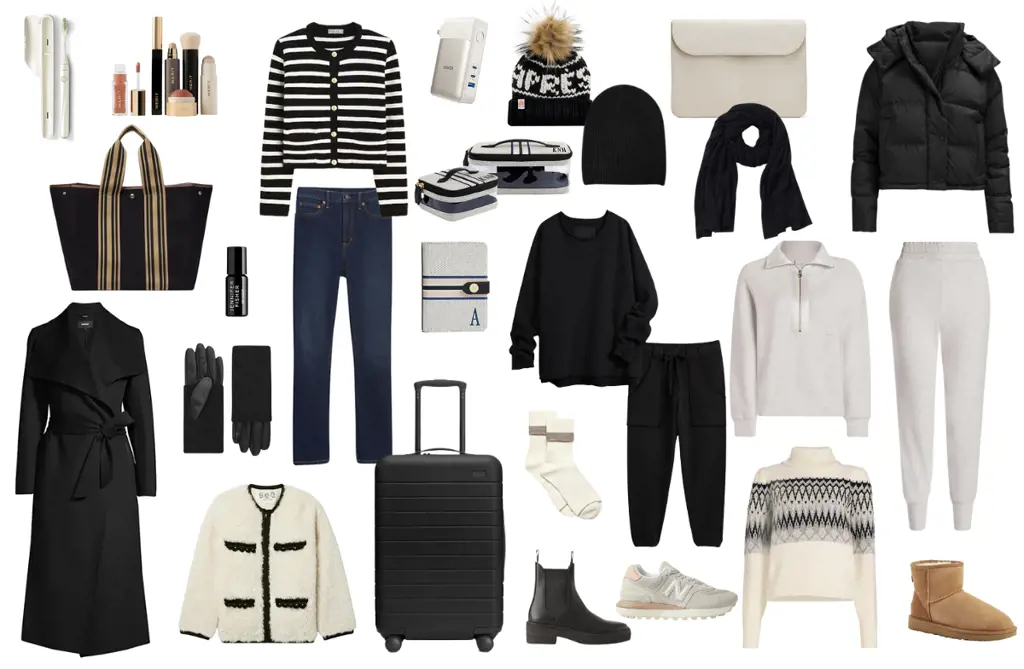
When traveling to a cold, snowy climate, it is essential to pack the right items to stay warm and comfortable throughout your trip. Here are some recommended items to consider packing:
- Warm clothing: Start with a good base layer made of thermal underwear or long-sleeve shirts and pants. These will help trap your body heat and keep you warm. Layer on top of this with sweaters, fleece jackets, and waterproof outerwear like a parka or down jacket. Don't forget to pack enough hats, gloves, scarves, and socks to keep your extremities warm.
- Insulated footwear: When walking in snowy conditions, it's crucial to have proper footwear. Look for waterproof boots with good insulation to keep your feet dry and warm. Opt for boots with a non-slip sole to prevent any accidents on icy surfaces.
- Hand and toe warmers: These small disposable packs generate heat and can be easily slipped into gloves or shoes to provide additional warmth. They are especially useful if you plan on spending an extended period outdoors.
- Thermal accessories: Consider packing thermal accessories such as neck gaiters, face masks, and earmuffs. These will help protect your face and ears from the cold winds and prevent frostbite.
- Lotion and lip balm: Cold, dry air can quickly lead to chapped skin and lips. Pack a good moisturizer and lip balm to prevent dryness and keep your skin hydrated.
- Sunglasses: The snow can reflect sunlight, causing a condition called snow blindness. Protect your eyes by packing a pair of sunglasses with UV protection. Polarized lenses are particularly effective in reducing glare.
- Portable phone charger: Cold temperatures can drain the battery life of your electronic devices more quickly. Carry a portable phone charger to ensure you can stay connected, especially in case of emergencies.
- Medications: If you take any prescription medications, be sure to pack enough for your entire trip. It can be challenging to find specific medications in remote snowy areas, so it's essential to be prepared.
- Travel-sized first aid kit: Accidents can happen, so it's always a good idea to have a basic first aid kit with you. Include items like band-aids, antiseptic ointment, pain relievers, and any other necessary medications or medical supplies specific to your needs.
- Travel insurance: Lastly, consider purchasing travel insurance that covers cold weather-related risks such as trip cancellation or medical emergencies. In case of any unforeseen events, having travel insurance can provide peace of mind.
Remember, these are just general recommendations, and you may need to adjust your packing list based on your specific destination and planned activities. Research the weather conditions and terrain of your destination to ensure you are adequately prepared for your cold, snowy adventure.
What You Should Pack for Boarding School: Tips from YouTube Influencers
You may want to see also

How do I prepare for traveling to both hot and cold climates on the same trip?
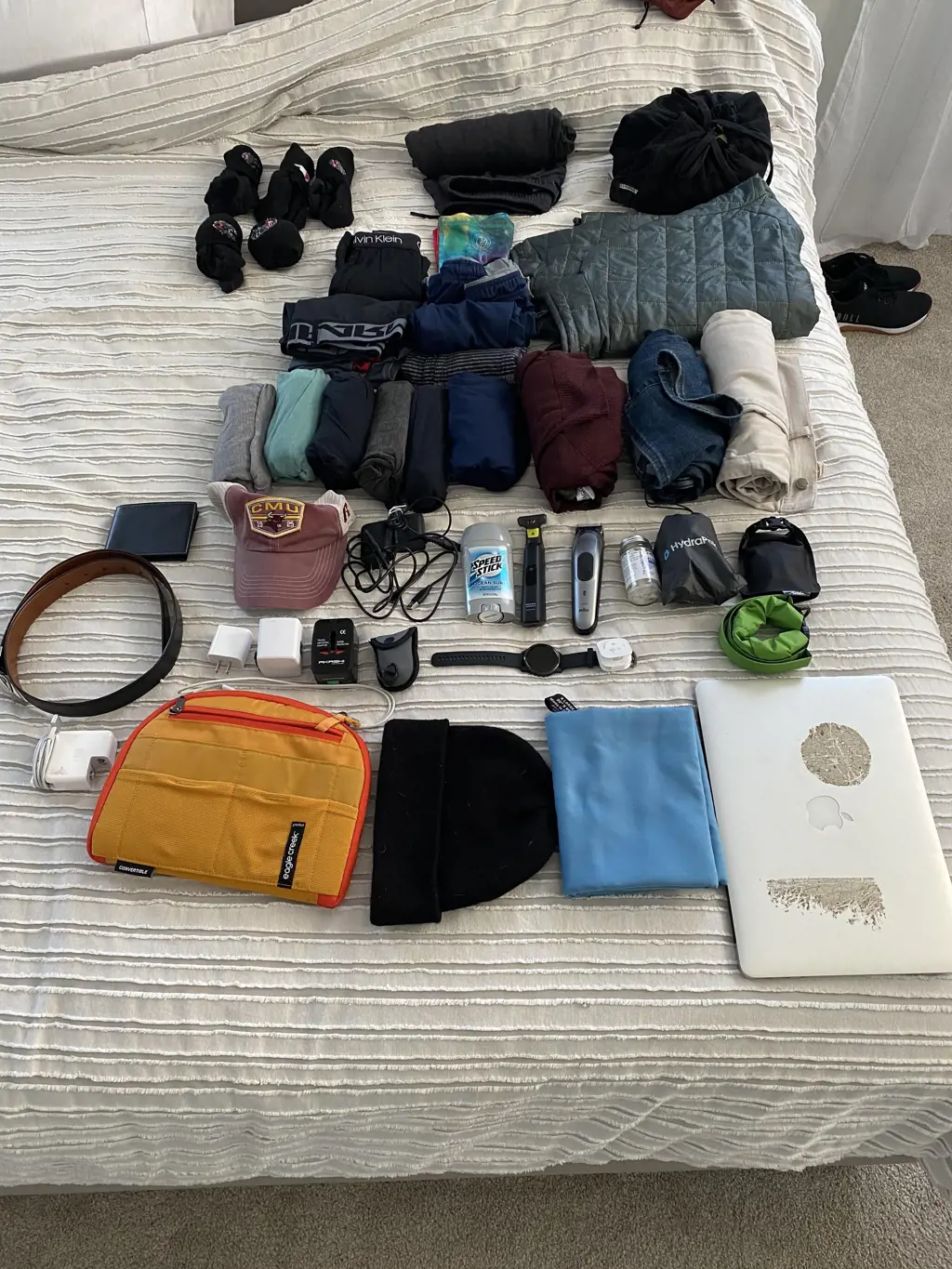
Traveling to both hot and cold climates on the same trip can be quite challenging, as it requires careful planning and packing to ensure you are prepared for the extreme weather conditions. Here are some tips to help you prepare for such a trip:
- Research the weather in each destination: Start by researching the average temperatures and weather patterns in each place you will be visiting. This will give you an idea of what to expect and help you plan your clothing accordingly.
- Layer your clothing: Layering is key when preparing for both hot and cold climates. Start with a base layer that will keep you cool in hot weather, such as lightweight, breathable fabrics like cotton or linen. On top of this, add a mid-layer for colder temperatures, such as a sweater or jacket. Finally, bring a waterproof outer layer to protect yourself from rain or snow.
- Choose versatile clothing: Opt for clothing items that can be worn in both hot and cold climates. For example, pack lightweight pants that can be paired with a t-shirt or sweater depending on the weather. Avoid bulky items that take up too much space in your bag and can't be easily layered.
- Don't forget about accessories: Accessories can make a big difference in managing temperature changes. Pack a wide-brimmed hat and sunglasses to protect yourself from the sun in hot climates, and bring a warm hat, gloves, and a scarf for colder temperatures. Additionally, consider bringing a compact umbrella that can be easily carried in your bag.
- Bring the right footwear: Choose footwear that is appropriate for both hot and cold weather conditions. In hot climates, opt for breathable sandals or lightweight sneakers. For colder climates, bring insulated boots that will keep your feet warm and dry.
- Research local customs and dress codes: In some destinations, there may be local customs or dress codes that you need to adhere to. Make sure to research and respect these guidelines when planning your wardrobe.
- Pack travel-sized toiletries: To save space in your luggage, pack travel-sized toiletries that meet airline regulations. This will also make it easier to carry your toiletries when moving between hot and cold climates.
- Be prepared for temperature fluctuations: Keep in mind that even within a single day, temperatures can fluctuate significantly. Be prepared to adjust your clothing layers accordingly and carry a small bag or backpack where you can easily store or remove clothing items as needed.
- Consider renting or buying gear at your destination: If you don't have space to pack bulky items like winter jackets or hiking boots, consider renting or buying them at your destination. This can save you space in your luggage and ensure you have the right gear for each climate.
- Stay hydrated: Regardless of the climate, it's essential to stay hydrated while traveling. Carry a reusable water bottle with you and drink plenty of water throughout the day to avoid dehydration.
Remember to always check the weather forecast before your trip and stay flexible with your outfit choices. By following these tips and being prepared, you can enjoy your trip to both hot and cold climates without any weather-related inconvenience.
Essential Supplies and Equipment for a Successful Medical Mission Trip
You may want to see also

Are there any specific accessories or footwear recommended for each climate?
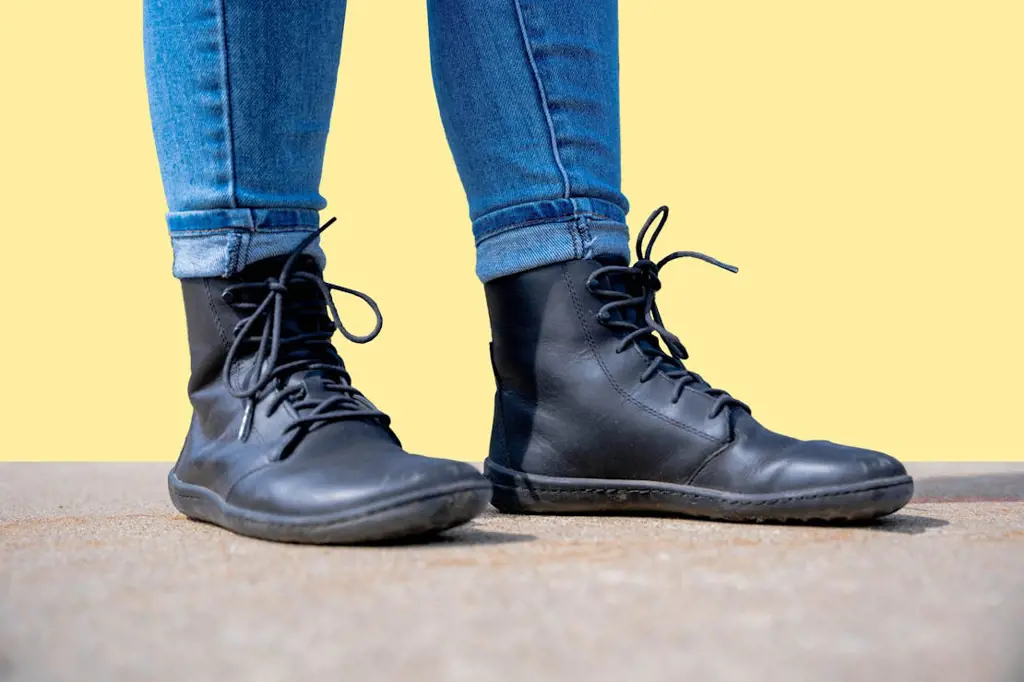
When it comes to dressing for different climates, it's important to consider not just clothing but also accessories and footwear. The right accessories and footwear can help protect you from the elements and ensure your comfort and safety.
In warm or hot climates, it is advisable to wear accessories that provide shade and protection from the sun. A wide-brimmed hat can help shield your face and neck from the sun's rays, reducing the risk of sunburn and heatstroke. Sunglasses with UV protection are also essential to protect your eyes from harmful UV rays.
When it comes to footwear in warm climates, breathable and lightweight options are key. Sandals or flip-flops are popular choices as they allow your feet to breathe and can be easily slipped on and off. Look for sandals with arch support to provide comfort and prevent foot fatigue.
In cold or snowy climates, warm accessories are essential to protect yourself from extreme cold temperatures. A wool or fleece hat will help to insulate your head and keep you warm. Gloves or mittens are important to protect your hands from frostbite and keep them warm. Look for options that are waterproof and insulated to provide added protection in wet and snowy conditions.
For footwear in cold climates, insulated and waterproof boots are a must. Look for boots with a thick, grippy sole to provide traction in icy conditions. Insulation such as Thinsulate or a similar material can help keep your feet warm, even in sub-zero temperatures. It's also a good idea to invest in thick, woolen socks to provide additional warmth and comfort.
In wet or rainy climates, waterproof accessories are essential to ensure you stay dry. A waterproof jacket or poncho will help protect you from the rain, while a sturdy and compact umbrella can provide additional protection. A waterproof backpack or bag can also help keep your belongings dry in wet conditions.
When it comes to footwear in wet climates, waterproof boots or shoes are a must. Look for options with Gore-Tex or similar waterproofing technology to keep your feet dry. Avoid shoes with mesh or breathable materials, as they can allow water to seep in.
In summary, dressing for different climates involves more than just selecting the right clothing. By considering the specific accessories and footwear recommended for each climate, you can ensure your comfort, protection, and safety. Whether you're braving the heat, the cold, or the rain, there are options available to suit your needs and keep you comfortable in any climate.
Essential Items to Pack for a Trip to Harrison Hot Springs
You may want to see also

Are there any important cultural considerations or dress codes to keep in mind when traveling to these different climates?
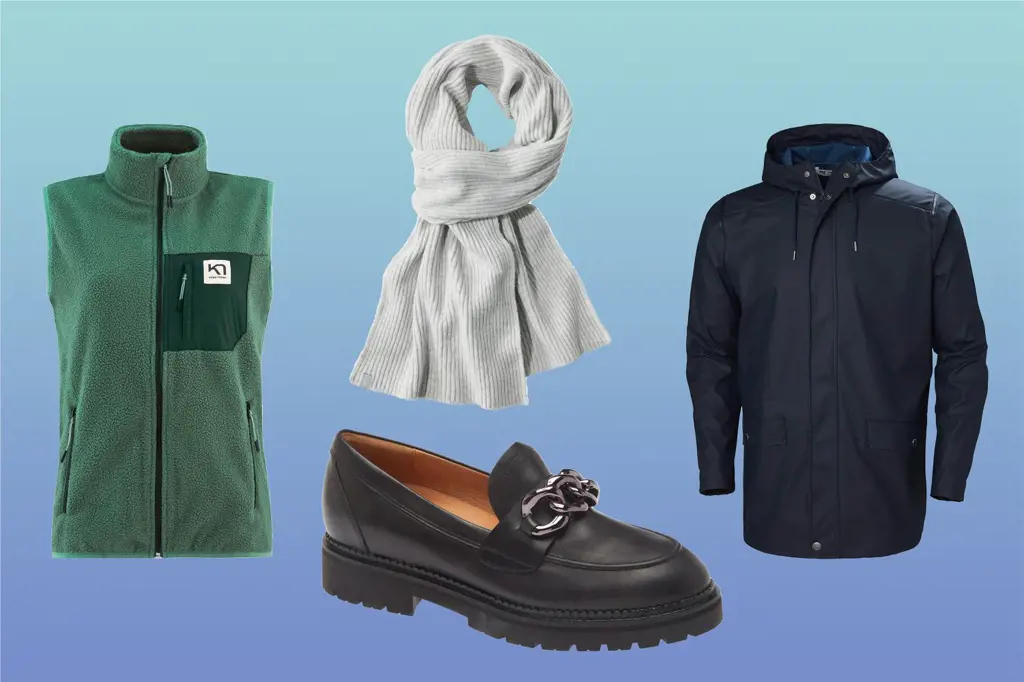
When traveling to different climates, it is important to be aware of the cultural considerations and dress codes in order to show respect for the local culture and avoid any cultural faux pas. Each climate and region may have its own unique customs and cultural norms when it comes to clothing and appearance. By understanding and adhering to these cultural considerations, travelers can ensure a more enjoyable and comfortable experience while avoiding any unintentional offense.
In warm and tropical climates, such as those found in Southeast Asia or the Caribbean, lightweight and breathable clothing is essential. It is important to respect the local customs and dress modestly, particularly when visiting religious sites or conservative communities. Both men and women should avoid wearing revealing attire, and women may be required to cover their shoulders and knees in certain places. Loose-fitting clothes made from natural fibers like cotton or linen are ideal, as they allow air circulation and help to keep the body cool. While swimwear is acceptable on the beach or at a resort, it is advisable to cover up when going into town or visiting local establishments.
In cold climates, such as those found in northern Europe or high-altitude regions, it is important to dress warmly and protect oneself from the elements. Layering is key, as it allows for flexibility in adjusting to fluctuating temperatures. It is advisable to wear thermal wear or woolen clothing that can provide insulation and retain body heat. Wearing a good pair of waterproof boots is essential to keep the feet dry and warm, especially in snowy or wet conditions. Additionally, a good quality winter coat, hat, and gloves should be worn to protect the body from wind and low temperatures.
In more conservative or traditional cultures, such as those found in the Middle East or parts of Africa, it is important to dress modestly and respectfully. Women are often expected to cover their hair and dress in loose-fitting clothing that covers the arms and legs. It is advisable for both men and women to avoid wearing revealing or tight-fitting clothing. This is especially important when visiting religious sites or attending formal events. By respecting the local customs and dress codes, travelers can both show respect for the local culture and blend in seamlessly with the local population.
It is always a good idea to research and learn about the cultural norms and expectations of the specific area or country you will be traveling to. This can be done through guidebooks, online resources, or even by reaching out to locals or fellow travelers who have visited the area before. By familiarizing yourself with the cultural dress codes and customs, you can ensure a more positive and respectful experience while traveling.
In conclusion, it is important to be mindful of cultural considerations and dress codes when traveling to different climates. By respecting the local customs and dressing appropriately, travelers can show respect for the local culture and avoid any cultural misunderstandings or offense. Whether it is dressing modestly in warm and tropical climates, layering up in cold climates, or abiding by conservative dress codes in traditional cultures, being aware and respectful of the local customs will ensure a smooth and enjoyable travel experience.
The Essential Foods to Pack for an Amusement Park Adventure
You may want to see also
Frequently asked questions
When traveling to a tropical climate, it's important to pack lightweight and breathable clothing. Opt for loose-fitting, cotton or linen garments that will allow air to circulate and help keep you cool. Don't forget to pack a swimsuit, as well as a hat and sunglasses to protect yourself from the sun. It's also a good idea to pack insect repellent and sunscreen to ensure your skin is protected from any potential bugs or harmful rays.
When traveling to a cold climate, it's essential to pack layers. Start with a base layer, such as thermal or moisture-wicking clothing, to keep your body warm and dry. Add on a mid-layer, such as a fleece or sweater, for added insulation. Finally, pack a waterproof and insulated outer layer to protect you from wind, rain, and snow. Don't forget to bring a hat, gloves, and a scarf to keep your extremities warm, as well as thick socks and sturdy boots for walking on icy or snowy terrain.
When traveling to a desert climate, it's crucial to pack clothing that will protect you from the intense heat and sun. Opt for light-colored, loose-fitting clothing made from breathable fabrics like cotton or linen. Long-sleeved shirts and pants can also provide added protection from the sun's rays. It's important to pack a wide-brimmed hat to shield your face and neck, as well as sunglasses to protect your eyes. Additionally, bring sunscreen with a high SPF, lip balm with SPF, and plenty of water to stay hydrated.
When traveling to a mountainous climate, it's important to pack clothing that will keep you warm and protected from the elements. Layering is key, so pack base layers made of moisture-wicking materials like wool or synthetic fabrics, as well as mid and outer layers that are insulated and waterproof. Don't forget to pack a warm hat, gloves, and a scarf to protect your extremities from frostbite. It's also essential to bring sturdy boots with good traction to navigate through potentially slippery or rocky terrain. Finally, pack sunscreen and sunglasses to protect yourself from the strong UV rays at high altitudes.







